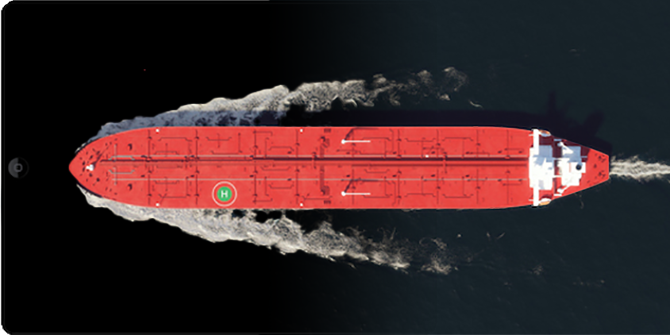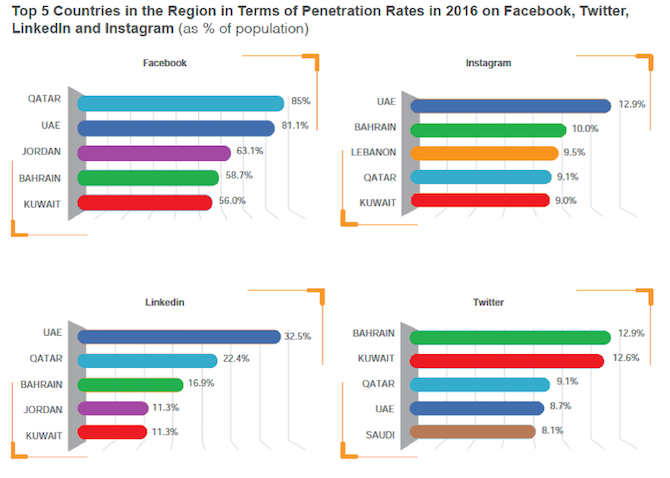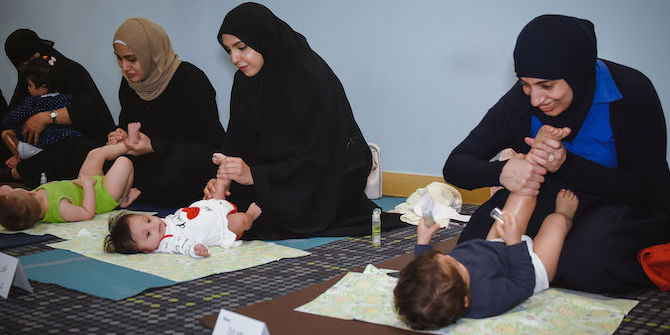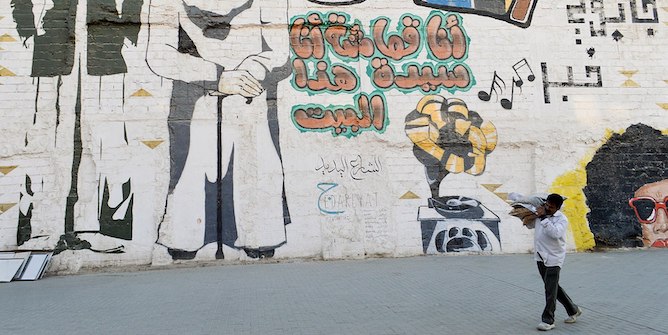by Fahed Al-Sumait
With some of the Arabian Peninsula’s best and worst digital indicators, what do we really know about Kuwait’s digital ecosystem?

It is a truism that the digital era has brought about transformative changes in global society. In relative terms, the world is still at the beginning of what the World Economic Forum refers to as the Fourth Industrial Revolution, with innovative, digitally driven trends rapidly emerging, such as Over-The-Top (OTT) technologies, virtual and augmented realities, and the imminent rise of an Internet of Things.
The Middle East is no exception to this global picture, complete with both a capitalisation on digital dividends and the perpetuation of massive inequities in their distribution. Within the region, the countries of the Arabian Peninsula appear to be amongst the best positioned to reap the benefits, due to such factors as their young populations, high levels of education and disposable income, large inflows of expatriates with specialised technology skills, and centralised decision-making systems. In fact, countries in that part of the region are frequently touted in global reports as some of the most digitally connected in the world. For example, according to Hootsuite’s 2018 report, Gulf Cooperation Council (GCC) countries hold four of the top five spots worldwide for internet penetration and four of the top six in terms of social media penetration, with Saudi Arabia also demonstrating the world’s fastest growth in social media users for multiple years running.
However, access alone does not an evolution make. While physical infrastructure and online activity are important dimensions, there is much more to creating a digital ecosystem that allows countries to truly capitalise on the benefits of the digital era. Kuwait is a country well positioned both economically and politically to gain from this ‘Fourth Industrial Revolution,’ though the available evidence suggests that it still has some way to go.
Defining the Digital
Following the Arab Uprisings of 2010–2011, much of the attention on digital technologies in the Middle East has focused on the political dimensions of social media. While important, the role of communication technologies in the upheavals was only part of the picture. There are many other social and economic dimensions, in addition to the political, which are relevant to understanding the region’s digital ecosystems. Looking forward, some of the most exciting technological innovations of the modern age that are collectively referred to as Industry 4.0 – autonomous vehicles, robotics, quantum computing, nanotechnology, 3D printing and big data analytics – all require a supportive digital ecosystem in order to flourish.
The concept of a digital ecosystem refers to a socio-technical system composed of interdependent groups of organisations, people and technologies that share a digitised backbone, a common coding language and have adaptive, scalable, and potentially sustainable features. Like its counterparts in nature, the features of a given digital environment determine which types of things (technologies, platforms, techniques, ideas, etc.) flourish or falter. The ingredients for creating a healthy ecosystem include a strong technological infrastructure, a favourable regulatory environment and the broad availability of skills and competencies among those who live and work within the system. Each of these dimensions requires careful planning and they are closely interconnected with other socio-political and economic considerations that are difficult to control. However, when planned well, countries can reap favourable digital dividends, such as healthy economic growth, improved service delivery, greater circulation of information and ideas that foster innovation, new social and business opportunities and a host of other derivatives.
To help usher in such benefits and reduce their dependence on fossil fuel exploitation, many governments in the Arabian Peninsula have put forward new, far-reaching visions. For example, Saudi Arabia and Qatar each have a ‘Vision 2030’, while Kuwait has launched its ‘Vision 2035’ – also referred to as New Kuwait. These attempts at engineering social and economic development cover a wide range of areas, with the digital elements only forming a part. In the case of Kuwait, the government has outlined seven ‘pillars’ for its Vision 2035 which either directly or indirectly intersect with information and communication technologies. In quantifying just the stated budgets allocated for specific initiatives within those pillars which directly contribute to a stronger digital ecosystem, the government has already earmarked KWD 211,794,867 (approximately GBP £535 million) for such projects. Although substantial, this figure does not even include financing for government initiatives outside of the New Kuwait metrics, nor investments by organisations such as private sector businesses or educational institutions. So if the plan is to invest heavily in creating systems that support a prosperous knowledge-based economy, more efficient governance, human capital development, and socio-technical innovations addressing current and future challenges, the logical question to ask is ‘what is the starting point?’
Kuwait’s Digital Enigma
Despite the proliferation of international organisations, academic institutions, think tanks and marketing firms which all have an interest in measuring digital technologies in Kuwait, there is surprisingly little public data available on the country. For example, the World Internet Project and Northwestern University in Qatar’s Media Use in the Middle East have never collected data on Kuwait. Other organisations only provide a glimpse of the situation utilising narrow indicators. The World Bank’s Digital Development project mainly measures the number of secure internet servers relative to other countries, while the Internet World Stats project reports on internet usage, Facebook penetration and the average speeds for mobile and broadband. The International Telecommunications Union’s publicly available data simply describe infrastructure facilities such as the number of ISPs, regulators, telecommunication providers, or households with computers relative to other countries.
The World Economic Forum (WEF), which specifically rates networked readiness, provides a slightly clearer picture. According to its 2016 global technology report, Kuwait leads the world in mobile coverage, is second in both cellular and mobile subscriptions and is 14th in household computer ownership. However, in terms of its overall readiness, at 61st out of 139 countries, it is still the lowest among the GCC and only eighth in the MENA region, despite having advantages such as the region’s second highest GDP per capita and the world’s highest-valued currency. The WEF’s specific measure of the social and economic impacts of Information and Communication Technologies (ICTs) puts Kuwait at a troubling 90th place worldwide (in the bottom third).
Moving beyond a focus on infrastructure and access, the most comprehensive data on how individuals in Kuwait actually use digital services and technologies comes from the Mohammed Bin Rashid School of Government in Dubai, which issues the yearly Arab Social Media report. While mainly concentrating on social media, its 2017 report provides some interesting insights about Kuwait. To begin with, it supports the WEF’s findings about mobile penetration rates, estimating Kuwait to have reached approximately 260%, or an average of 2.6 phone subscriptions per person. Among all Arab countries, Kuwait is fifth in Facebook penetration and contains the largest number of users over the age of 30 (57%), as well as the highest number of female users among the GCC at just under 30%. Although declining steadily since 2012, it ranks second after Bahrain with the highest Twitter penetration rates and is first for the number of active Twitter users, producing an average of 4.2 tweets per day. Despite its small size of just over 4 million residents, it hosts the fifth largest Arab Twitter population in total numbers, as well as in the number of tweets generated. On Twitter, the gender imbalance is similar to Facebook, at 33% female, which is slightly above the region’s average. Arabic still dominates the Kuwaiti ‘Twittersphere’ but use of the language on Facebook continues to decline. The report also measures usage of Instagram and LinkedIn, for neither of which Kuwait demonstrates anything of note, other than hosting the most ‘mature’ LinkedIn users at 51% over 35 years old. Not surprisingly, the report finds that all of these social media platforms are overwhelmingly accessed in Kuwait using mobile phones.

When compared against the other GCC countries, it is clear that Kuwait is consistently overshadowed by the UAE, Qatar and Bahrain on most measures, with Twitter being the only exception in terms of platforms. Taken together with what is known about its relatively low performance in infrastructure achievements, this perhaps suggests that the country’s political liberalisation, high GDP per capita and other social advantages have not yet translated into the kind of leading digital ecosystem that will be necessary for the country to achieve its ambitious development plans.
This work will be developed into an article for the Middle East Centre’s Papers series in January 2019, which will explore Kuwait’s digital ecosystem in more detail and outline a series of recommendations in the areas of data availability, governance, educational reform and innovation incubation. Taken together, such improvements could go a long way toward helping the country migrate its economic survival away from oil tankers and over to tablets.






